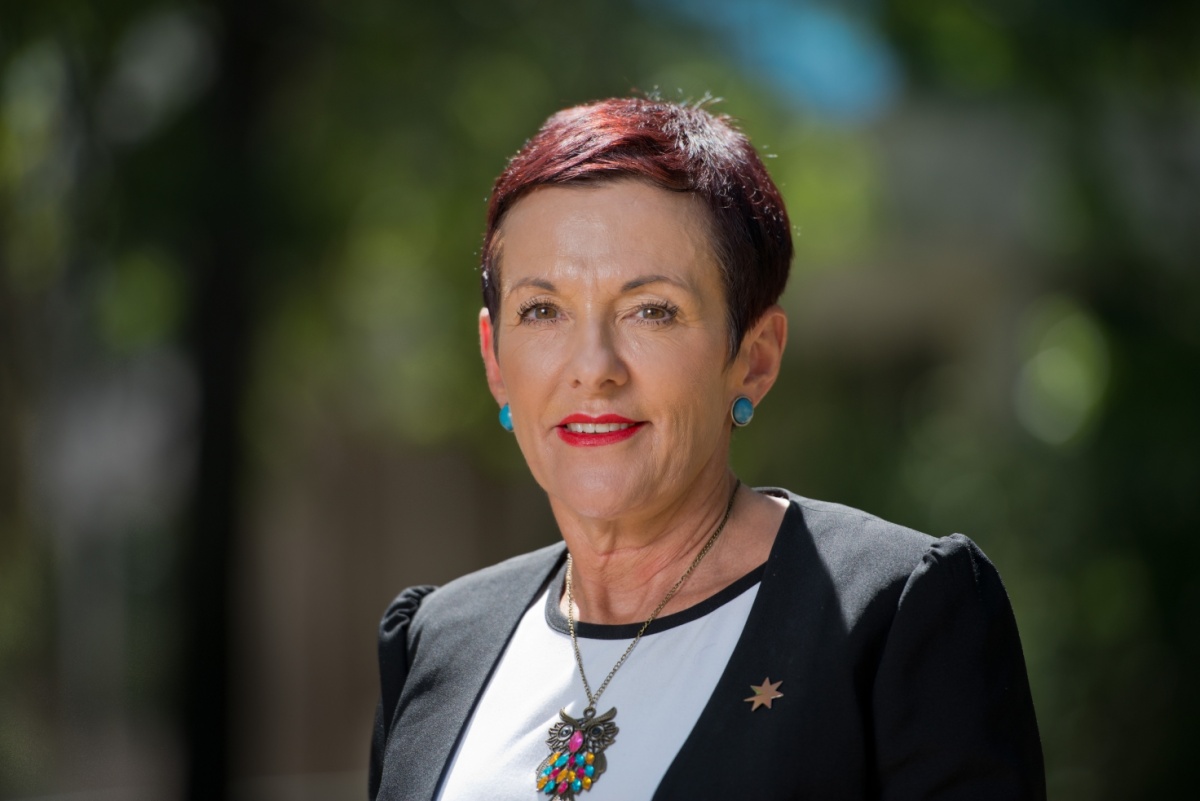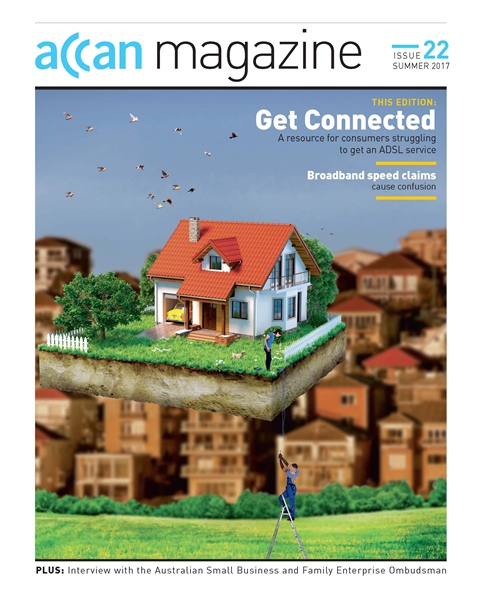- Details
The summary below outlines ACCAN's activities from 1 September 2016 to 30 November 2016.
- Details
 Many small businesses rely on telecommunication services to operate. When services do not deliver, this can result in losses for small business owners.
Many small businesses rely on telecommunication services to operate. When services do not deliver, this can result in losses for small business owners.
To get insights into what telecommunication issues small businesses are facing and hear more about what they need from their services, we interviewed the Australian Small Business and Family Enterprise Ombudsman (ASBFEO), Kate Carnell.
Read more: Number one telco issue for small business is ‘access’
Write comment (1 Comment)- Details

Download: ![]() ACCAN Magazine Issue 22 Summer 20173.93 MB (Note: reading order not accessible)
ACCAN Magazine Issue 22 Summer 20173.93 MB (Note: reading order not accessible)
Download accessible version: ![]() ACCAN Summer 2017 Magazine - Accessible Version39.29 KB
ACCAN Summer 2017 Magazine - Accessible Version39.29 KB
- Details
ACCAN submitted to the Interim Report of the Australian Consumer Law review to provide feedback on proposed options to improve consumer protection laws and guidance material for telecommunications consumers.
We were pleased to see the Interim Report taking up several of ACCAN’s concerns:
Read more: Australian Consumer Law Review - Response to Interim Report
- Details
The ACCC is undertaking a inquiry to determine whether the difference in geographic coverage provided by Telstra, Optus and Vodafone is having a negative effect on competition for mobile services, and whether requiring mobile roaming would be in the long-term interests of consumers.
Mobile roaming is where a mobile network operator uses (or roams onto) the mobile network of another mobile network operator (the host mobile network) so that the first operator can provide mobile services to consumers outside of its own network coverage area.
- Details
The Regional, Rural and Remote Communications Coalition has welcomed the release of the Productivity Commission’s (PC) draft report into the Universal Service Obligation (USO) with its finding that the current arrangements are in need of reform, sooner rather than later.
Achieving a USO that is technology neutral and that provides access to both voice and data is one of the fundamental pillars that prompted the formation of this Coalition.
NSW Farmers Association President, Derek Schoen, said: “It is pleasing that the PC has recognised that the current USO agreement is out of date and that voice and broadband access should be part of the USO into the future.
Read more: Regional Coalition welcomes push for data and voice in the USO
- Details
The ACMA recently consulted with ACCAN on changes that aim to improve the identity-checking requirements for activating prepaid mobile services.
Between November 2015 and July 2016 the ACMA conducted a review of the Telecommunications (Service Provider – Identity Checks for Prepaid Mobile Carriage Services) Determination 2013. The working group established as part of the review made 17 recommendations, which the ACMA has agreed to support.
ACCAN is pleased to see that the ACMA is supporting the working group’s recommendations, which will help to enable all consumers to obtain prepaid services without undue burden.
Read more: Revised identity-checking requirements for prepaid mobile services
- Details
 The Regional, Rural, and Remote Communications Coalition (RRRCC) is a collective of 21 organisations dedicated to improving connectivity in the bush. Through awareness campaigns and direct advocacy, the RRRCC amplifies the voices of communities in regional, rural, and remote Australia.
The Regional, Rural, and Remote Communications Coalition (RRRCC) is a collective of 21 organisations dedicated to improving connectivity in the bush. Through awareness campaigns and direct advocacy, the RRRCC amplifies the voices of communities in regional, rural, and remote Australia.
Read more: Regional, Rural and Remote Communications Coalition
- Details
A group of like-minded advocacy groups have come together to end the data drought by forming the Regional, Rural and Remote Communications Coalition to champion better communications services for consumers and small businesses living in rural, remote or regional areas.
The Coalition includes the Australian Communications Consumer Action Network (ACCAN), the National Farmers’ Federation (NFF), the Country Women’s Association of NSW, the Isolated Children’s Parents’ Association and AgForce Queensland.
“The Coalition was formed to highlight the collective concerns of families, businesses and communities in rural and regional Australia about the lack of equitable access to reliable and quality telecommunications services in regional, rural and remote Australia,” ACCAN CEO, Teresa Corbin said.
- Details
 ACCAN and Infoxchange have come together to produce a report focusing on the more than 427,000 dwellings (about 5 per cent of housing stock) in Australia which fall into the category of social housing – housing provided by the government and community sectors to accommodate people in the lowest income brackets. Residents of social housing are more likely to fall on the wrong side of the digital divide, and face a range of barriers in getting connected. These barriers can be practical, such as getting permissions to install connections in old apartment blocks, budgetary, where the cost to sign up may be prohibitive, or may be related to digital literacy.
ACCAN and Infoxchange have come together to produce a report focusing on the more than 427,000 dwellings (about 5 per cent of housing stock) in Australia which fall into the category of social housing – housing provided by the government and community sectors to accommodate people in the lowest income brackets. Residents of social housing are more likely to fall on the wrong side of the digital divide, and face a range of barriers in getting connected. These barriers can be practical, such as getting permissions to install connections in old apartment blocks, budgetary, where the cost to sign up may be prohibitive, or may be related to digital literacy.
- Details
There are a number of fixed networks delivering superfast broadband services (capable of delivering greater than 25Mbps download speeds). In October the ACCC consulted about the pricing and terms and conditions that should apply to some of these networks, such as Opticomm, OPENetworks, LBN Co, Telstra South Brisbane and TPGs FTTB networks. The price and terms for NBN are set out under different documents, called the Special Access Undertaking.
- Details
In September the ACCC commenced a broad study into the telecommunications market and the likely developments over the next 5 years. It asked a range of questions about the market to understand if there are any potential issues that will negatively affect consumers. This included questions such as what information would be beneficial to consumers in choosing products, whether competition is working in the voice and broadband service market and whether there are issues with emerging technologies and services.
